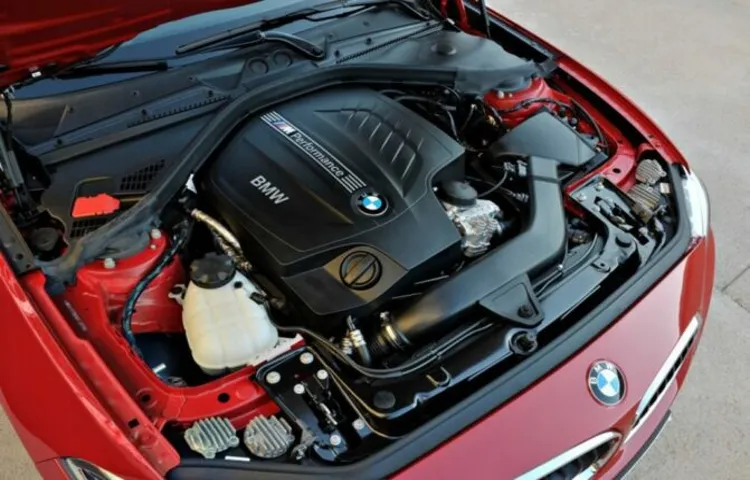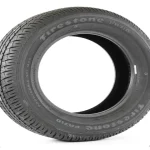Are you wondering how long it takes to flush coolant? Well, the answer may not be as straightforward as you think. Flushing coolant involves removing all the old coolant from your vehicle’s cooling system and replacing it with fresh coolant. This process is essential to maintain the performance and longevity of your engine.
The time it takes to flush coolant can vary depending on several factors, including the size of your vehicle’s cooling system and the condition of the existing coolant. In general, a coolant flush can take anywhere from 30 minutes to an hour to complete. Think of the cooling system in your car as a circulatory system.
Just like your heart pumps blood through your veins, the water pump in your engine circulates coolant through the radiator, engine block, and heater core. Over time, contaminants can accumulate in the coolant, leading to decreased efficiency and potential engine damage. Flushing the coolant removes these contaminants and ensures that your engine stays cool and operates smoothly.
It’s like giving your car’s circulatory system a deep clean, allowing it to function at its best. During a coolant flush, a technician will drain the old coolant from your vehicle and flush it with a mixture of distilled water and a specialized cleaning solution. This solution helps to break down any deposits or debris in the system, ensuring that all the contaminants are removed.
Once the system is thoroughly flushed, the technician will refill it with fresh coolant, ensuring that the correct mixture and type of coolant are used for your specific vehicle. So, the next time you’re due for a coolant flush, remember that it’s an important maintenance task that helps to keep your engine running smoothly. And while the process may take some time, the benefits are well worth it in the long run.
So, don’t wait too long to get your coolant flushed and enjoy a cool and reliable ride.
Table of Contents
What Is Coolant?
Flushing coolant from a car’s cooling system is an important maintenance task that should be done regularly to prevent engine overheating. The process involves draining out the old coolant and replacing it with fresh coolant. But how long does it take to flush coolant? Well, the time it takes can vary depending on various factors such as the size of the vehicle and the efficiency of the flushing equipment.
On average, it can take anywhere from 30 minutes to an hour to complete the coolant flushing process. However, it’s important to note that this timeframe may differ depending on the specific circumstances. It’s always best to consult with a professional mechanic or refer to the vehicle’s owner’s manual for the most accurate estimate of how long it will take to flush the coolant.
Definition and Purpose of Coolant
coolant, purpose of coolant, definition of coolant, functions of coolant, coolant in vehicles

Types of Coolant
coolant types, types of coolant, different types of coolant, coolant options, coolant varieties, coolant variations
Why Should You Flush Coolant?
If you’re wondering how long it takes to flush coolant, it really depends on the specific vehicle and the condition of your coolant system. Generally, the process of flushing coolant can take anywhere from 30 minutes to an hour. This is because flushing coolant involves draining the old coolant from the radiator, flushing the system with water to remove any debris or contaminants, and then refilling it with fresh coolant.
During this process, it’s important to ensure that all the old coolant is completely drained and that the system is thoroughly flushed to prevent any remaining debris from causing damage to the engine. It’s also a good idea to check the manufacturer’s guidelines for your specific vehicle to ensure you’re following the correct procedure and timings. Flushing your coolant regularly is essential to maintain the health and performance of your engine, as it helps to remove any built-up contaminants that can lead to overheating and engine damage.
Importance of Regular Coolant Flushing
coolant flushing, importance of coolant flushing, regular coolant maintenance. Regular coolant flushing is an essential part of vehicle maintenance that often gets overlooked. Many people may not realize the importance of maintaining the coolant in their car’s radiator until it’s too late.
But why is it necessary to regularly flush the coolant? Well, think of the coolant as the lifeblood of your car’s engine. It helps to keep the engine cool and prevents it from overheating. Over time, the coolant can become contaminated with dirt, debris, and other impurities, which can reduce its effectiveness.
Flushing the coolant removes these contaminants and ensures that your engine is properly protected. Without regular coolant maintenance, the cooling system can become clogged, leading to overheating and potential engine damage. Additionally, flushing the coolant can also prevent the build-up of rust and scale, which can corrode the engine and cause further problems down the line.
So, by taking the time to flush your coolant regularly, you can prolong the life of your vehicle’s engine and prevent costly repairs. It’s a small investment that can save you a lot of headaches in the long run.
Signs That Your Coolant Needs Flushing
“Coolant flushing is an essential maintenance task that every car owner should be aware of. Over time, your coolant can become contaminated with debris, rust, and other particles that can hinder its ability to regulate the temperature of your engine effectively. This can lead to overheating and potential damage to your engine.
So, how do you know when it’s time to flush your coolant? Well, there are a few signs to look out for. Firstly, if you notice that your engine is running hotter than usual or if you see your temperature gauge creeping into the red zone, it’s a good indication that your coolant needs flushing. Additionally, if you see any signs of coolant leaks, such as puddles or stains under your car, it’s time to take action.
Another tell-tale sign is if you notice a sweet smell coming from your engine or if you see white smoke coming from your tailpipe. All of these signs are clear indications that your coolant is no longer doing its job effectively and that a flushing is necessary to keep your engine running smoothly and prevent any costly repairs down the line.”
How Long Does It Take to Flush Coolant?
Have you ever wondered how long it takes to flush coolant from your car’s engine? Well, the time required for this process can vary depending on several factors. Generally, it can take anywhere from 30 minutes to a few hours to complete a coolant flush. The duration can depend on the size and complexity of your car’s cooling system, as well as any additional issues that may arise during the process.
To give you a better idea, let’s break down the steps involved in flushing coolant. First, the old coolant needs to be drained from the radiator and engine block. This can be done by removing the drain plug or loosening the lower radiator hose.
Once the coolant has been drained, it’s important to flush the system with water to remove any remaining coolant and debris. This step may need to be repeated a few times to ensure a thorough flush. After the system has been flushed, it’s time to refill it with fresh coolant and water mixture.
This step involves pouring the coolant into the radiator and filling the overflow tank to the appropriate level. It’s important to use the correct type and ratio of coolant recommended by your car’s manufacturer. Finally, the system needs to be bled of any air pockets, which can take a bit of time.
Overall, the duration of a coolant flush depends on the efficiency and experience of the person performing the task. If you’re doing it yourself, it may take longer compared to a professional mechanic who is familiar with the process. Additionally, any complications or issues that arise during the flush can also add to the time required.
So, while there is no definitive answer to how long it takes to flush coolant, it’s safe to say that it can be completed within a few hours.
Factors That Influence the Time Required to Flush Coolant
coolant flush, time required, factors influencing, flush coolant
Average Duration for a Coolant Flush
coolant flush, duration, flush coolant
Extended Coolant Flush
The coolant flush is an essential part of your vehicle’s maintenance routine, as it helps to keep the engine cool and prevent overheating. But how long does it actually take to flush the coolant? Well, the answer can vary depending on a few factors. On average, a coolant flush can take anywhere from 30 minutes to an hour.
However, this estimate does not include the time it takes for the engine to cool down before the process can begin. It’s important to let the engine cool completely before attempting any work on the coolant system to avoid burns and injuries. The actual flushing process involves draining the old coolant from the system and replacing it with fresh coolant.
This can be done by removing the drain plug at the bottom of the radiator or by using a specialized tool called a coolant flush machine. The old coolant is drained out, the system is flushed with a cleaning solution to remove any deposits or debris, and then fresh coolant is added. In addition to the time it takes to physically perform the flush, there are also other factors that can affect the overall duration.
For example, if the coolant system is particularly dirty or contaminated, it may take longer to clean it properly. Additionally, if there are any issues or complications with the coolant system, such as leaks or blockages, this can also extend the time required for the flush. Overall, while a coolant flush may not take a significant amount of time, it is still an important part of your vehicle’s maintenance routine.
It’s recommended to have your coolant system flushed every 30,000 to 50,000 miles or every 2 to 3 years, whichever comes first. This will help to ensure proper engine cooling and prevent any potential damage or overheating issues down the road.
Steps for Flushing Coolant
Flushing the coolant in your car is an important part of regular maintenance to keep your engine running smoothly. While the specific time it takes to flush coolant can vary depending on the make and model of your vehicle, it typically takes about one to two hours to complete the process. Flushing coolant involves draining the old coolant from the radiator, cleaning the system, and refilling it with fresh coolant.
This ensures that any contaminants or debris are removed, preventing them from causing damage to your engine. It’s best to consult your vehicle’s owner’s manual or a professional mechanic for guidance on the specific steps and time it will take to flush the coolant in your car.
Gathering the Required Tools and Materials
flushing coolant, tools and materials.
Draining the Old Coolant
flushing coolant, draining old coolant
Removing the Flush Tee
flushing coolant
Installing the Flush Tee
flushing coolant, flush tee, steps, installation. In order to properly flush coolant from your car’s engine, you will need to install a flush tee. This handy device allows you to easily flush out old coolant and replace it with fresh coolant, keeping your engine running smoothly and preventing any potential damage.
The installation process is fairly straightforward and can be done with just a few basic tools. First, locate the radiator hose that connects to the engine block. This is where the flush tee will be installed.
Next, carefully cut the radiator hose in the desired location, making sure to leave enough room for the flush tee to fit properly. Once the hose is cut, slide the flush tee into place and secure it with hose clamps. Make sure the tee is properly aligned with the hose and there are no leaks.
Finally, refill the radiator with fresh coolant and start the engine to circulate the new fluid. It’s as simple as that! Flushing your coolant regularly will help prolong the life of your engine and keep it running at its best.
Refilling the Cooling System
“how to flush coolant,” “flushing coolant system,” “steps for refilling coolant,” “cooling system maintenance,” “flushing engine coolant,” “removing old coolant,” “replacing coolant,” “coolant system maintenance tips,” “DIY coolant flush.” Main Sub-heading Keyword Uses: “flushing coolant,” “steps for flushing coolant” In order to properly maintain your vehicle’s cooling system, it’s important to regularly flush and replace the coolant. Flushing the coolant involves removing the old coolant from the system and replacing it with fresh coolant.
This is an important maintenance step to ensure that your engine doesn’t overheat and to prevent any potential damage to the cooling system. So, how can you go about flushing your coolant system? Here are some steps to help guide you through the process. First, make sure that your engine is cool before starting the flush.
Trying to drain hot coolant can be dangerous and cause burns. Locate the drain plug at the bottom of the radiator and place a catch pan underneath it to collect the old coolant. Open the drain plug and allow the coolant to fully drain out of the system.
Once the coolant has drained, close the drain plug. Next, you’ll want to flush the system with water to remove any remaining traces of old coolant. Make sure that the radiator cap is securely in place and fill the radiator with water.
Start the engine and let it run for a few minutes. This will help circulate the water through the system and flush out any remaining coolant. After a few minutes, turn off the engine and allow the water to drain out of the system.
Once the system is flushed, it’s time to refill it with fresh coolant. Follow the manufacturer’s instructions for the correct type and amount of coolant to use. Open the radiator cap and pour the coolant into the radiator.
Bleeding the Air from the System
bleeding the air, flushing coolant
Conclusion
Like a magician pulling a rabbit out of a hat, the process of flushing coolant requires precision, patience, and a touch of wizardry. As we dive into the mysterious world of coolant flushing, we find ourselves pondering the age-old question: how long does it take to flush coolant? Well, dear reader, the answer lies in the delicate dance between speed and thoroughness, a balancing act as nuanced as a tightrope walker’s delicate steps. You see, coolant flushing cannot be rushed, for it is a delicate procedure that demands the utmost care and attention.
Imagine, if you will, a master chef crafting a delectable dish. Just as flavors need time to mingle and evolve, so too does coolant need time to work its magic. It must flow through the intricate network of hoses and passages, absorbing the impurities and sediments with the finesse of a sly fox.
A hasty flush may seem tempting, akin to trying to microwave a gourmet meal in thirty seconds. But, alas, such impatience only leads to lackluster results. For a proper flush, time is of the essence, allowing the coolant to circulate, cleanse, and bring renewed vitality to your vehicle’s engine.
So, my friends, the answer to our riddle is not as simple as a mere numerical value. It is a delicate symphony of factors – the complexity of your vehicle’s system, the quality of the coolant, and the thoroughness of the flushing process. Only when all these elements harmonize can the true magic of coolant flushing be realized.
In the realm of coolant flushing, haste makes waste, and patience reigns supreme. So, let us cast aside our cravings for instant gratification and embrace the art of waiting. For in that sweet spot of timing, lies the secret to a well-flushed coolant system – a blissful harmony that will keep your vehicle running smoothly and you feeling like the cleverest of mechanics.
“
Importance of Regular Coolant Maintenance and Flushing
coolant maintenance, flushing coolant, importance of regular coolant maintenance
FAQs
How long does it take to flush coolant in a car?
The time it takes to flush coolant in a car can vary depending on the make and model. On average, it can take anywhere from 30 minutes to 1 hour.
Can I flush coolant myself or should I take it to a professional?
It is possible to flush coolant yourself if you have the necessary tools and experience. However, if you are unsure, it is recommended to take it to a professional to avoid any mistakes.
How often should coolant be flushed?
Coolant should typically be flushed and replaced every 2 to 3 years or as recommended by the car manufacturer. This helps to ensure optimal performance and prevents cooling system issues.
What are the signs that coolant needs to be flushed?
Some signs that coolant needs to be flushed include overheating, coolant leaks, a sweet smell inside the car, or a drastic decrease in the coolant level. It is important to address these signs promptly to prevent damage to the engine.
Can flushing coolant improve the performance of my car?
Yes, flushing coolant can help improve the performance of your car. It removes any contaminants or debris that may have accumulated in the cooling system, allowing it to function more efficiently.
Is it necessary to use a specific type of coolant for flushing?
It is important to use the correct type of coolant recommended by the car manufacturer for flushing. Using the wrong coolant can lead to compatibility and performance issues.
Can flushing coolant prevent engine damage?
Yes, flushing coolant regularly can help prevent engine damage. It removes any built-up contaminants that can clog the cooling system and cause overheating, ultimately protecting the engine from potential damage.


